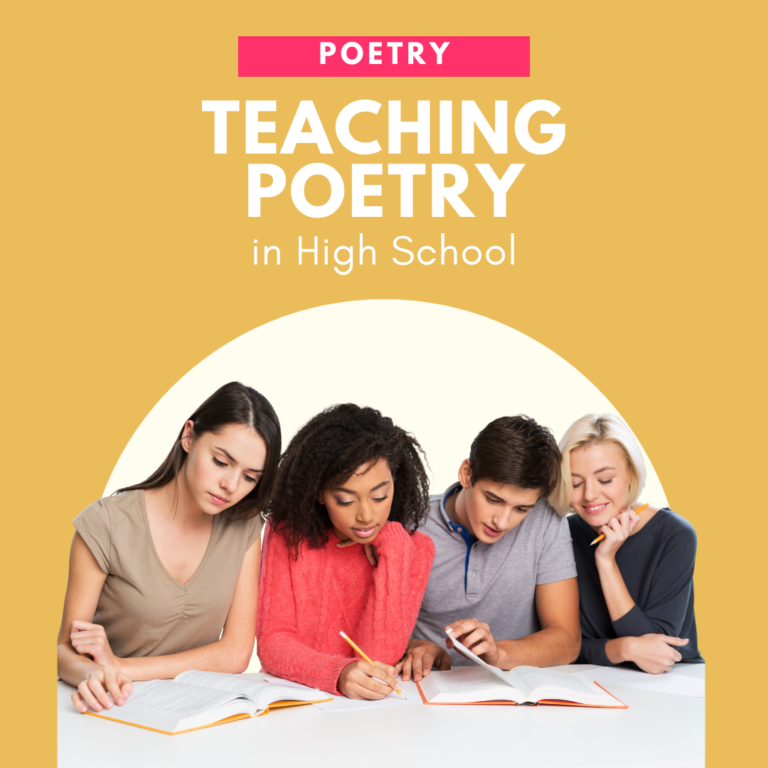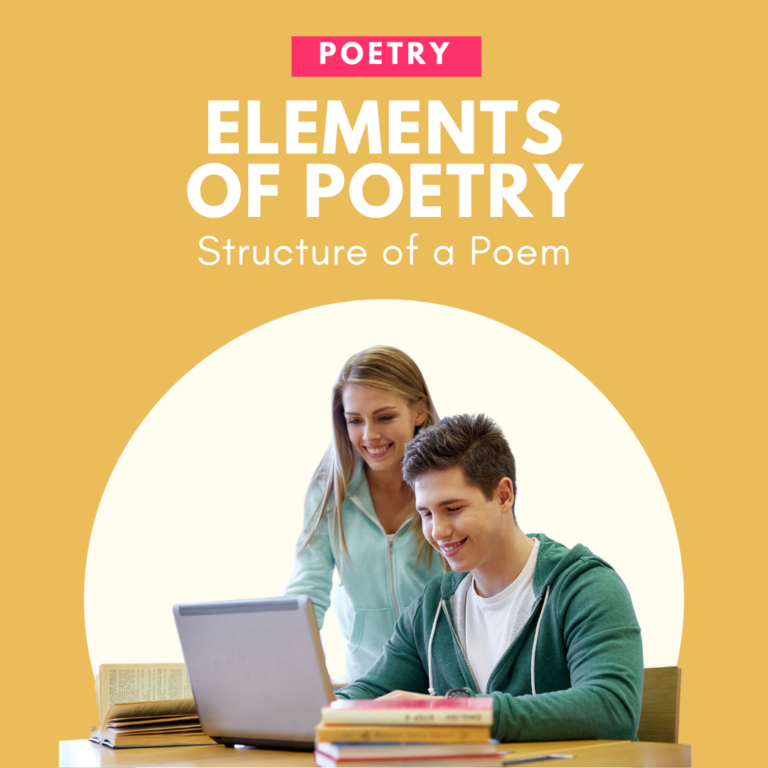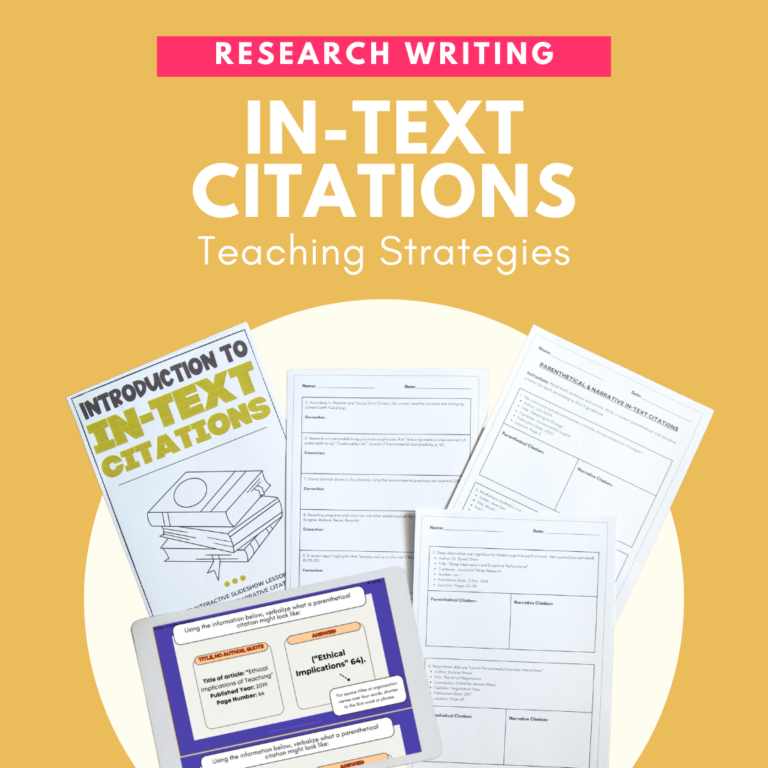“Thank You, Ma’am” by Langston Hughes is a short story that packs a powerful message into just a few pages. This story is perfect for middle and high school students and provides an opportunity to explore themes of kindness, trust, and the unexpected ways people can impact each other’s lives.
This blog post provides some of my favourite activities for teaching “Thank You, Ma’am.” From examining the intricate symbolism of the short story to understanding the broader societal implications, this post will provide you with the tools to effectively teach this classic piece of literature. If you’re introducing this story for the first time, expect a lively classroom filled with insightful discussions and discoveries!
What is the main message in “Thank You, Ma’am?”
In Langston Hughes’ “Thank You, Ma’am,” the central message is about the power of kindness, understanding, and the potential for personal transformation. This compelling short story centers on a brief, unexpected encounter: Mrs. Luella Bates Washington Jones, a large woman with a large purse, meets Roger, a young boy who tries to steal from her.
Through this encounter, Hughes brilliantly navigates themes of empathy, trust, and the impact of compassionate actions. Mrs. Jones, instead of reacting with anger to Roger’s wrongdoing, chooses to understand his situation. She teaches him an invaluable lesson in morality and care. The story leaves readers contemplating the profound impact of unexpected kindness. It also explores the ability of such acts to change one’s perspective – and, potentially, one’s life course.

What age is “Thank You, Ma’am” suitable for?
Langston Hughes’ compelling narrative is well-suited for middle school students, particularly those in grades 7 and 8. The story’s Lexile level and thematic depth make it accessible and engaging for this age group.
While primarily ideal for middle schoolers, the story also holds significant value for freshmen and sophomores in high school. Older students can dive deeper into the themes of empathy, ethics, and social conditions, enriching their understanding of character motivations and societal impacts.
However, it’s worth noting that “Thank You, Ma’am” touches on themes of poverty and crime. While they are handled delicately, they may require some contextual explanation. Teachers should consider the maturity and experiences of their students to ensure the story is both educational and appropriate for their classroom dynamics.
For more guidance on incorporating diverse literature in your classroom, check out this blog post.
What is the main conflict in “Thank You, Ma’am?”
The conflict in “Thank You, Ma’am” revolves around a clash of actions and morals between two characters from different walks of life. This short story brings to the forefront the tension between Mrs. Luella Bates Washington Jones, a woman who understands the hardships of life, and Roger, a young boy caught in the act of stealing her purse. Hughes utilizes this source of conflict to highlight the unpredictable ways people can respond to adversity.
The story also subtly explores the societal issues that underlie such conflicts, including poverty, trust, and the power of empathy. It serves as a rich source for discussions on broader topics like social conditions, ethical dilemmas, and the transformative power of kindness and understanding. It’s also a great pairing for World Kindness Day or Black History Month.

Activities for Teaching “Thank You, Ma’am”
Short stories like “Thank You, Ma’am” are excellent for sparking student engagement without overwhelming them with extensive reading assignments. Their concise nature also makes these texts ideal for promoting detailed close reading in a less daunting way.
I typically dedicate a week or two to teaching “Thank You, Ma’am.” This allows students ample time to thoroughly grasp and reflect on the text. This extended period encourages a deeper understanding and mastery of the story, enabling students to revisit and appreciate its nuances more fully.
Here are my favourite activities for teaching “Thank You, Ma’am”:
1. Analyzing Symbolism in “Thank You, Ma’am”
Part of the beauty of this short story lies in the symbolism woven throughout the narrative. Students will naturally engage with the symbolic elements present in the story, often without direct prompting; but to truly understand the nuances of Hughes’ work, they’ll need to decipher the deeper meanings behind these symbols.
This presents the opportunity to teach students about symbolism. This graphic organizer encourages students to locate and interpret symbols in Langston Hughes’ “Thank You, Ma’am.” Students will be challenged to dissect key symbols within the story and interpret their broader meanings.
This lesson on symbolism can also be supplemented with a pre-reading activity using this informational handout. This handout defines symbolism and provides common examples found in literature.

2. Exploring the Life of Author Langston Hughes
Understanding Langston Hughes’ unique life experiences will enrich students’ interpretation of “Thank You, Ma’am.” This is why I love to open up our exploration of this short story by diving into Langston Hughes’ life story.
This biography activity explores Langston Hughes’ formative years and family background, tracing the influences that shaped his literary journey. It highlights his enduring impact on literature, marked by his innovation in jazz poetry and his key role in the Harlem Renaissance.
This informational handout also explores Hughes’ experiences with racial segregation and prejudice, his political activism, and the ways in which his life experiences have shaped his writing. Exploring these events in Hughes’ life will contribute to your students’ understanding of related themes in the short story.
This biography activity also includes accompanying worksheets that prompt students to find the definitions for several vocabulary key terms. These terms will support students’ reading of the autobiography and help them further analyze “Thank You, Ma’am.”
3. Making Text-to-Text Connections
By studying Langston Hughes’ life, students will learn about his significant contribution to literature. Most notable is his development of a unique style known as “jazz poetry.” Exploring the poetry of Langston Hughes serves as a wonderful extension activity for “Thank You, Ma’am” and provides students with the opportunity to practice making text-to-text connections.
This activity includes three poems by Langston Hughes: “Harlem,” “Mother and Son,” and “I, Too.” Students can annotate each poem directly in the worksheets provided before answering the accompanying short answer questions. These short answer questions will also guide students to find parallels in themes across Hughes’ work.
Students also have the option of using the poetry annotation bookmark included to scaffold the annotation process. This bookmark prompts students to consider the meter, rhyme scheme, and type of verse of each poem. If your students are unfamiliar with this process, you can lead into this activity using this annotating poetry lesson, which includes a guided annotation and analysis of Langston Hughes’ poem, “The Negro Speaks of Rivers.”

Teaching “Thank You, Ma’am”: Bringing It All Together
“Thank You, Ma’am” offers a wealth of engaging teaching opportunities. This story is a treasure trove of lessons in empathy, understanding, and the power of kindness. I hope this blog post has provided you with a variety of dynamic and thought-provoking teaching ideas. To deepen your students’ engagement with Langston Hughes’ classic short story, be sure to to check out this “Thank You Ma’am” unit from my shop.




